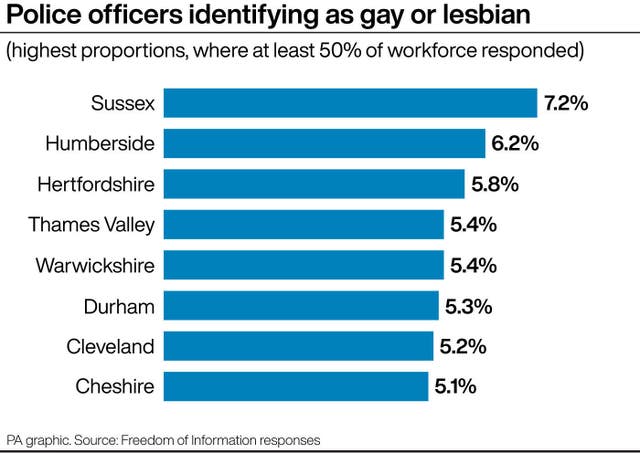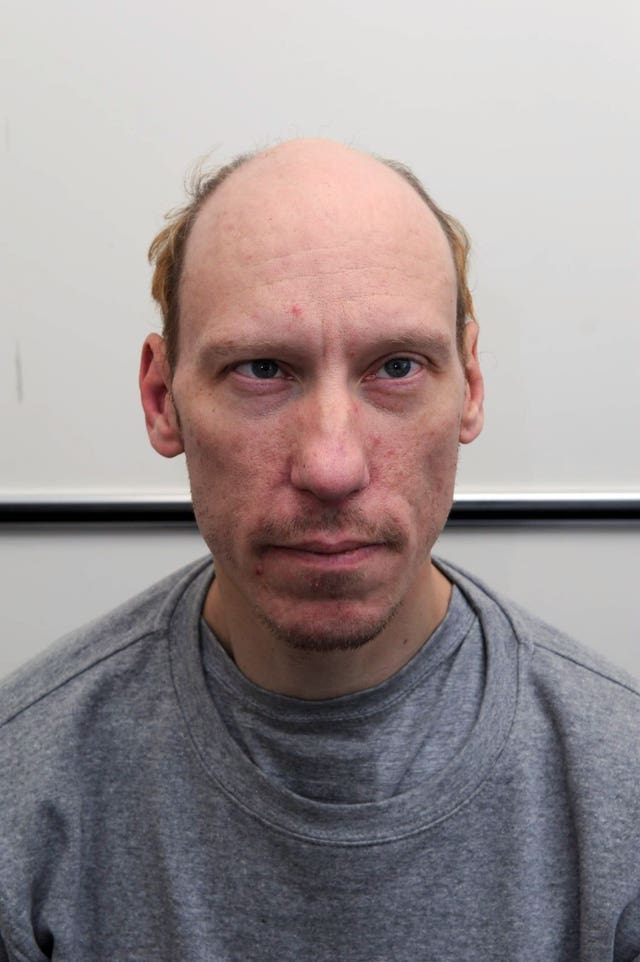
Police officers who identify as gay or lesbian make up less than 3% of the workforce in some constabularies across England and Wales, the first figures of their kind suggest.
Other forces reported levels more than double this, according to snapshot staffing figures obtained from police forces by the PA news agency under Freedom of Information (FOI) laws.
However, the true number is likely to be much higher due to some officers being reluctant to come out to their employers amid concerns about their sexuality creating a barrier to promotion, or resulting in homophobic abuse.
The data follows the damning conclusions of the inquest for the victims of serial killer Stephen Port, at which grieving family members and friends said prejudice, a lack of LGBT officers in Barking and Dagenham, and a failure to engage with the gay community at the time meant crucial clues about his murderous spree were missed.

Chief Inspector Lee Broadstock, co-chairman of the LGBT+ network representing gay, lesbian, bisexual and trans officers across the country, told PA: “If we’re not representative of our communities then we don’t understand that community.
“There needs to be an understanding of what the communities need to give people an equitable police service.”
The percentage of officers in each force identifying as gay, lesbian, bisexual and straight was calculated by PA only where constabularies had data for at least half of its officers.
This equated to 26 out of 40 forces which replied to FOI requests.
While heavily caveated, the data indicates wide discrepancies in the number of LGB officers in each police force.
The highest percentage of officers identifying as gay or lesbian, of the 26 forces with relevant information, was in Sussex (7.2%), followed by Humberside (6.2%) and Hertfordshire (5.8%).

Conversely, the lowest percentage of gay and lesbian officers was in Lincolnshire (2.3%), followed by Dyfed Powys and North Wales (both 2.9%).
The figures showed Dyfed Powys and Suffolk had the lowest percentage of officers identifying as bisexual (0.8%).
The highest rate was in Warwickshire (4.4%).
Similarly, the highest rate of heterosexual officers was in Dyfed Powys and Lincolnshire (both 96.2%), followed by Gloucestershire (95.5%) and South Wales (95.4%).
The lowest rate was in Sussex (89.1%) and Warwickshire (90.2%).
The Metropolitan Police – the country’s largest force, with a headcount of more than 33,500 – only had data for 40.1% of the workforce.
The figures showed 92.8% described themselves as heterosexual, where their sexuality was recorded to be either straight, gay, lesbian, bisexual, self-described, or pansexual/other.
The figures showed 5.1% identified as gay or lesbian, with 2.1% bisexual.
Mr Broadstock, a chief inspector with Greater Manchester Police, said: “I think what the data suggests is that there is probably a higher concentration of officers who are LGB in areas where there is a more welcoming environment for them – that’s where they will gravitate.”
But he said the true number of LGB officers in each force is likely to be higher, with no sexuality recorded for 61,000 out of 131,000 officers.

Mr Broadstock, who said he has previously experienced homophobia among colleagues and members of the public, added: “Sometimes they don’t trust what their force HR is going to do with their responses – are they going to be treated less favourably in future when it comes to promotions? – and without doubt Port shed a light on cultures within policing that are not welcoming environments.
“It is sad that that is still the case sometimes, but the picture is absolutely improving.
“If you tried to get these figures 20 years ago it would have been a very different story – I doubt you would have got any data.”
Latest figures from the Office for National Statistics, published in 2019, show an estimated 2.7% of the UK population aged 16 and over identify as gay, lesbian or bisexual, up from 2.2% in 2018.
Another 3.0% stated they did not know their sexuality, or refused to answer, up from 2.5% in 2018.


Why are you making commenting on The National only available to subscribers?
We know there are thousands of National readers who want to debate, argue and go back and forth in the comments section of our stories. We’ve got the most informed readers in Scotland, asking each other the big questions about the future of our country.
Unfortunately, though, these important debates are being spoiled by a vocal minority of trolls who aren’t really interested in the issues, try to derail the conversations, register under fake names, and post vile abuse.
So that’s why we’ve decided to make the ability to comment only available to our paying subscribers. That way, all the trolls who post abuse on our website will have to pay if they want to join the debate – and risk a permanent ban from the account that they subscribe with.
The conversation will go back to what it should be about – people who care passionately about the issues, but disagree constructively on what we should do about them. Let’s get that debate started!
Callum Baird, Editor of The National
Comments: Our rules
We want our comments to be a lively and valuable part of our community - a place where readers can debate and engage with the most important local issues. The ability to comment on our stories is a privilege, not a right, however, and that privilege may be withdrawn if it is abused or misused.
Please report any comments that break our rules.
Read the rules hereComments are closed on this article